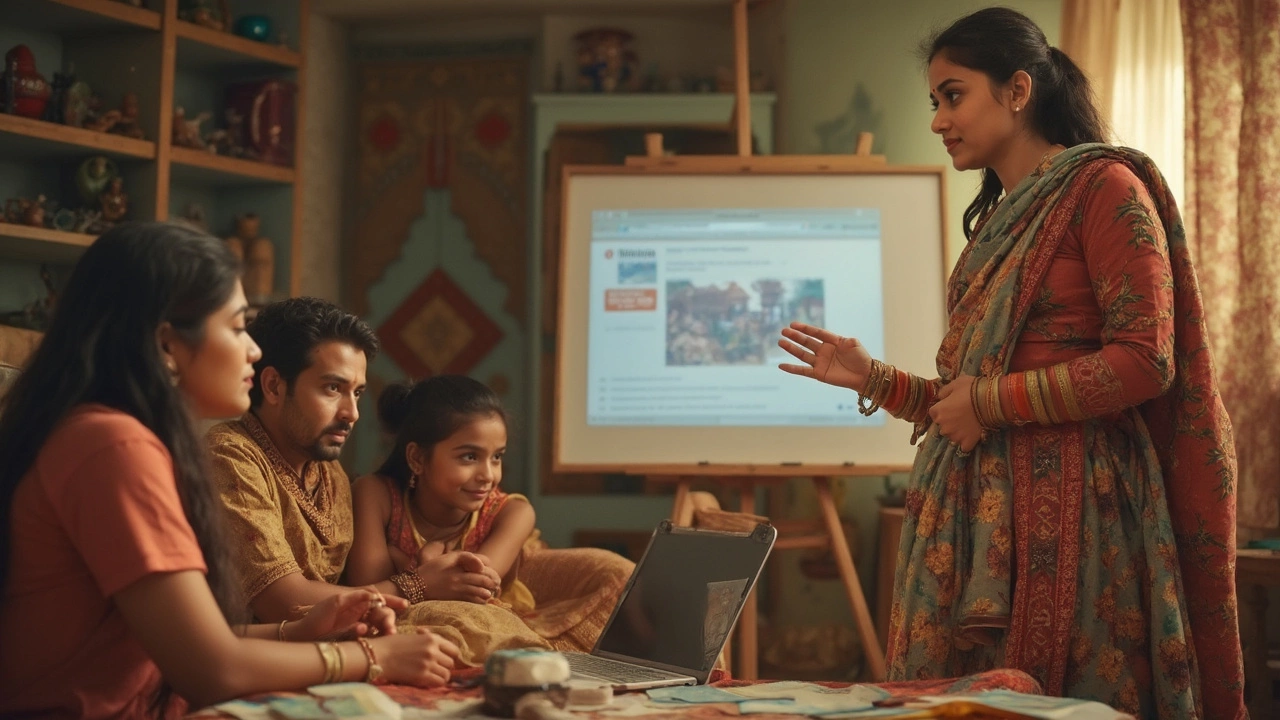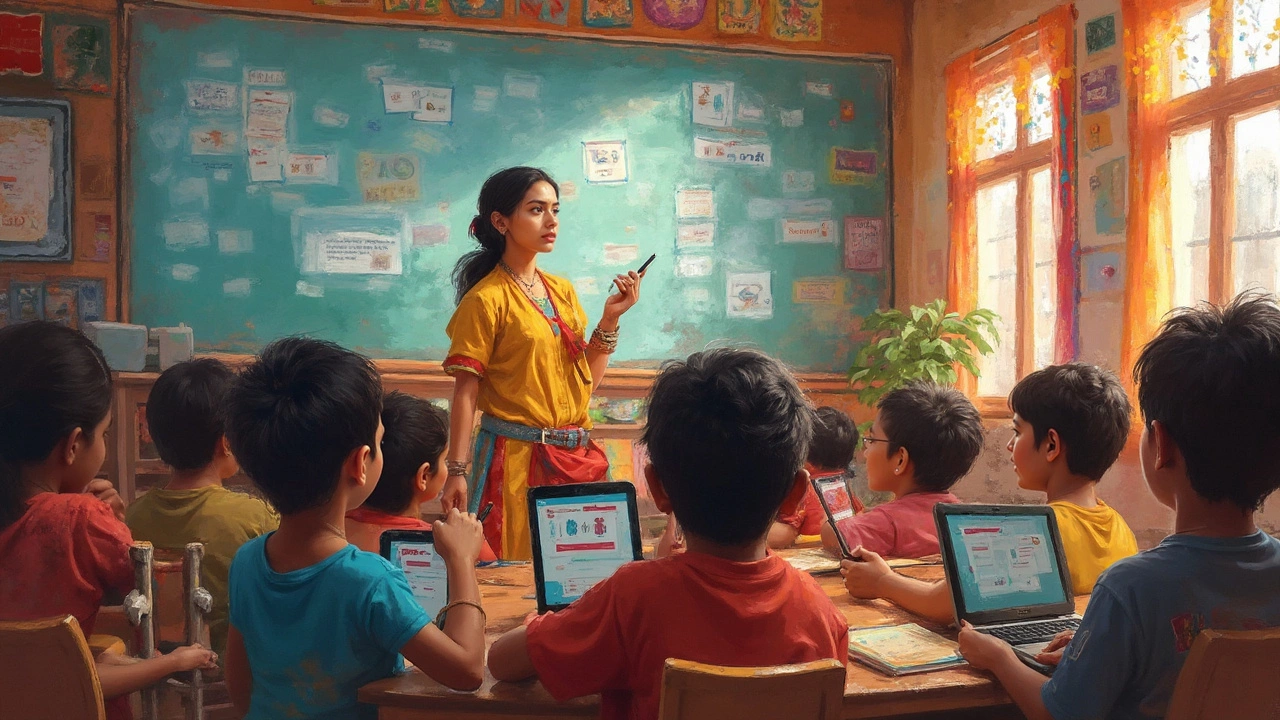Is Google really an e-learning platform? That's a question floating around more than you'd think. Sure, most of us fire up Google to search for quick answers, but does that make it a full-fledged tool for learning?
In a way, Google has carved out a significant niche in the education world. It's not a platform like Coursera or Udemy, but it's undoubtedly a massive player in online education. The magic starts when you peek into Google Classroom. Teachers love it because it streamlines tasks like assigning homework and providing feedback.
Then there's YouTube, an endless reservoir of lectures, tutorials, and more. Ever used it to fix your dripping faucet or dive into a history lesson you snoozed through in class? That's informal learning, but learning, nonetheless.
But Google's role in e-learning isn't just about these tools. It's about how they're stitched into the everyday experiences of students and teachers around the globe. Keep reading, and we'll uncover these layers, looking at both the pluses and the pitfalls Google presents in the world of e-learning.
- Google's Role in Education
- Google Tools for Learning
- Teachers and Google's Ecosystem
- Student Experiences with Google
- The Limitations and Future of Google in E-Learning
Google's Role in Education
When you think about Google in an educational context, it’s hard not to see its fingerprints all over modern classrooms. Google's suite of tools has become indispensable for many schools, offering much more than just search capabilities. Let's dive into how Google is shaping today’s education.
Google Classroom
At the heart of Google's educational impact is Google Classroom. This tool has transformed how assignments are distributed and graded. It allows teachers to create, share, and grade assignments digitally, ensuring everything is in one convenient place. One teacher noted, "Google Classroom is a lifesaver! It has streamlined my grading process and allows me to give real-time feedback to my students."
Albert Yu, a high school teacher from San Francisco, describes Google Classroom as a "game-changer," emphasizing its ease of use and practicality.
YouTube as an Educational Resource
Of course, we can't overlook YouTube in this conversation. The platform hosts an extensive range of educational content available at the click of a button. From crash courses in history to detailed math tutorials, students can learn at their own pace. Whether it's a quick fix or an in-depth study session, YouTube has something for everyone.
Google Meet for Virtual Classrooms
In the wake of the pandemic, schools around the world started using Google Meet for virtual classrooms. It's a crucial tool for remote learning, enabling live interaction between teachers and students. According to a 2023 survey, over 60% of schools in North America utilized Google Meet for online classes. This shift has made remote learning seamless and more accessible.
Supporting Innovation in Schools
Google has also introduced initiatives like the Google for Education Transformation Framework, which supports schools in using technology effectively. It's about more than just providing tools; it's about fostering innovation in teaching. Sounds promising, right?
| Google Tool | Usage |
|---|---|
| Google Classroom | 64% of U.S. teachers use it |
| YouTube | 80% of students learn through videos |
| Google Meet | Used by 60% of schools for online classes |
All these initiatives make one thing clear: Google's influence in education is vast. Whether it's creating a structured online classroom or providing a platform for learning new skills, Google's tools have become essential for both teachers and students navigating the digital learning landscape.
Google Tools for Learning
When we talk about Google as an e-learning platform, its treasure chest of tools plays a central role. From Google Classroom to Google Drive, these tools make online education a breeze for both teachers and students.
Google Classroom
Let’s start with the mighty Google Classroom. This is a go-to for educators looking to organize class materials, assign homework, and provide feedback. The charm lies in its ability to bring everything into one neat virtual space. It cuts down the chaos, making learning more efficient. Plus, it syncs smoothly with other Google services.
YouTube for Learning
Next up, we have YouTube. It's packed with educational content covering just about every subject. From DIY videos to impassioned history lessons, students scour YouTube for more engaging ways to learn than textbooks sometimes offer. Teachers even create custom playlists to aid classroom learning.
Google Drive and Docs
There’s also Google Drive and Docs, ideal for collaboration. Students tackle group projects without fuss, sharing files and documents instantly. Google Sheets, Slides, you name it – it’s a complete workbench for students to craft and share their work.
Google Meet and Hangouts
Then there’s Google Meet and Hangouts, essential now more than ever. As virtual classrooms have become routine, these tools are crucial for video lessons and group discussions, connecting students and teachers in real-time from anywhere.
Organizing with Google Calendar
Don’t underestimate Google Calendar. Keeping track of classes, deadlines, and school events can be daunting, but not with Google Calendar. Students and teachers sync their schedules, avoiding the last-minute panic over missed submissions or lectures.
Google equips us with more than just tools—it creates an interconnected environment that supports and enhances learning in a digital age. Whether you're in the classroom or at home, Google's suite makes learning accessible and organized.

Teachers and Google's Ecosystem
Teaching is no easy job, and in today's digital age, having the right tools can make all the difference. That's where Google's suite of e-learning tools comes into play, simplifying things for teachers around the world.
Google Classroom is at the forefront of this ecosystem. Teachers use it to distribute assignments, create quizzes, and even communicate with parents. It integrates smoothly with other Google apps like Google Drive, making it super easy to share documents and resources. Imagine the days of photocopying handouts being replaced with a quick upload and share!
Integration with Other Tools
Beyond Google Classroom, there's a bunch of other tools within the Google ecosystem that help in teaching. Google Forms, for example, is a great tip for creating tests and surveys. These forms are straightforward to set up, and you can instantly check responses through Google Sheets.
Another game-changer is YouTube. Teachers use it to find educational videos and playlists to support lessons. Plus, video tutorials can often explain complex topics in a way that makes sense to students who learn visually.
Background Statistics
A survey in 2023 found that over 80% of schools in the U.S. used Google Classroom to support their teaching efforts. That's a pretty solid testament to its effectiveness!
Engagement and Collaboration
Now, about communication—Google Meet integrated with Classroom has been essential for holding virtual classes. It's a real lifesaver when face-to-face isn't possible. And tools like Google Docs allow for real-time collaboration, letting students and teachers work together even outside classroom walls.
So, while Google might not market itself as a strict e-learning platform, its tools are unmistakably part of the daily teaching grind. They bring everything under one roof, making life easier for teachers trying to keep up with the digital shift. And for teachers, that's a win.
Student Experiences with Google
When you imagine online education, student experiences with Google truly stand out. From primary schoolers to college learners, students are tapping into Google's ecosystem like never before. So, what's it like for them?
One of the most praised tools is Google Classroom. It's a central hub where assignments feel like less of a hassle and more of a checklist. Students say that having everything organized in one place makes a huge difference. No more digging through email threads or forgotten notes. Emma R., a high school junior, shares, "It's just so helpful to have all my classwork linked up. It's like a to-do list that keeps me sane."
Google Meet and Group Collaboration
Then there's Google Meet, which steps up the game for virtual meet-ups. Students appreciate its simplicity when joining a class from home. No need for complicated logins. Just a link, and you're in. Many students say it mirrors real-life classrooms as they can easily see their teachers and peers pop up on their screens.
According to Education Weekly, "Google tools have become indispensable to the digital learning landscape, providing seamless community-driven solutions."
But it's not just about attending classes. Google's perfect for group projects too. Imagine a world where your whole group can jump into the same document at once, thanks to Google Docs. Collaboration has never felt more synchronized. The days of "Who has the latest version?" are over.
YouTube for Learning
Of course, we can't forget about YouTube. This platform is like a secret weapon for students. It's where they go to get homework help, a better grasp of challenging concepts, or even to learn an entirely new skill. Many students find visual learning through YouTube tutorials unlocks a new level of understanding, making complex topics digestible.
However, every rose has its thorns. Students sometimes struggle with distractions. It's all too easy to slip away from educational content to entertaining videos. But with a bit of discipline, students can harness Google's strengths to their benefit.
Here's a little stat for you: An overwhelming 76% of students in a recent survey found that Google tools enhance their learning efficiency. That's a big vote of confidence in its favour!
| Tool | Popular Use | Student Rating |
|---|---|---|
| Google Classroom | Assignment organization | 4.8/5 |
| Google Meet | Online classes | 4.7/5 |
| YouTube | Tutorials & learning videos | 4.9/5 |
In summary, Google has undeniably enhanced student experiences in the world of e-learning. With the right approach, it transforms from just being a handy tool into an actual educational powerhouse.

The Limitations and Future of Google in E-Learning
Even with Google's impressive suite of tools, it's fair to say it doesn't cover all the bases in the e-learning sphere. One major shortfall is that Google isn't specifically designed as an educational platform from the ground up. It lacks some of the specialized functionalities found in platforms like Blackboard or Moodle, such as advanced analytics on student performance or built-in assessments that are automatic and tailored for complex educational needs.
Furthermore, reliance on Google tools presumes you have consistent, reliable internet access—which, let's be honest, isn't the case for everyone. This digital divide means not all students can benefit equally from Google's offerings. Moreover, its open-ended nature sometimes means there's too much freedom, which can overwhelm those who need structured guidance.
Looking into the future, Google seems poised to expand its e-learning potential. They're likely to beef up Google Classroom and APIs to allow better integration with other educational technology (edtech) tools. Collaborations with content creators and educational institutions could bring more tailored features. Maybe somewhere down the line, Google AI will play a more significant role in creating personalized learning paths.
Sure, we can expect Google to innovate and make strides toward being a more comprehensive online education solution. But until then, it serves best as a supplementary tool rather than the whole package. And hey, that’s not necessarily a bad thing—using Google alongside other platforms can create a fantastic, well-rounded learning experience.
